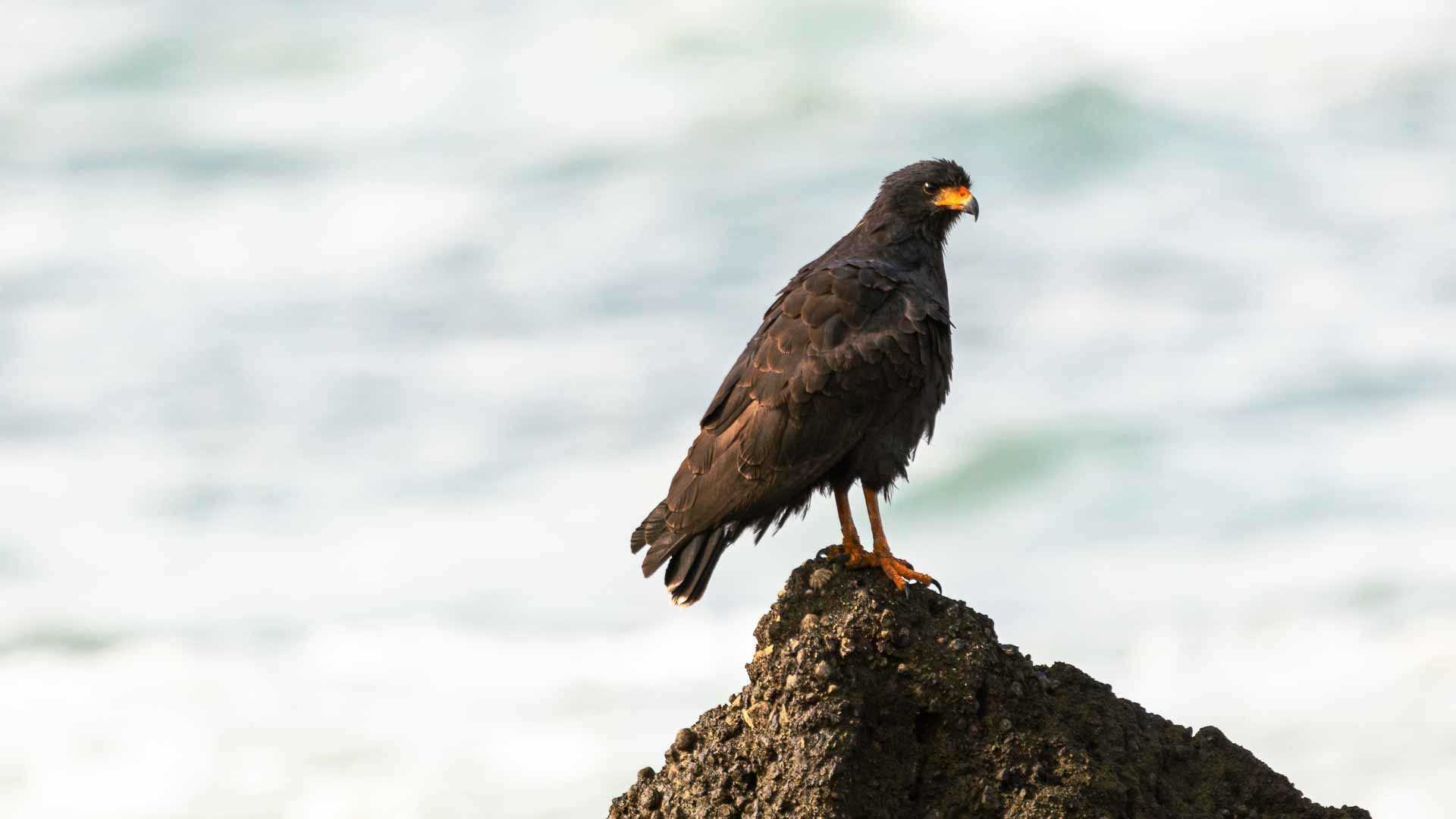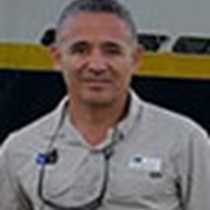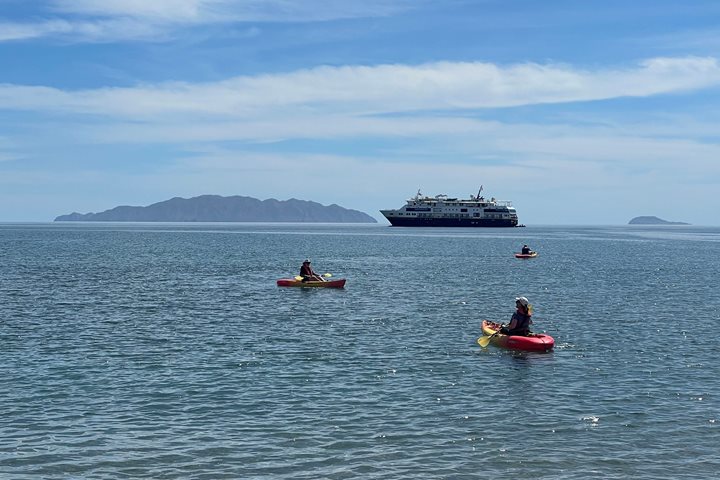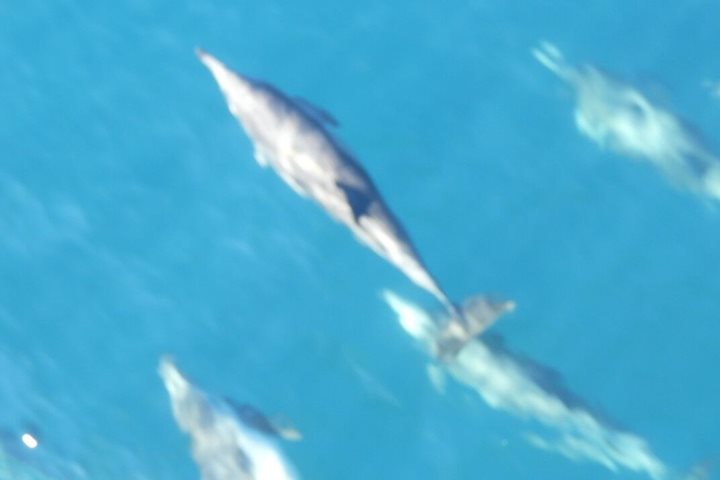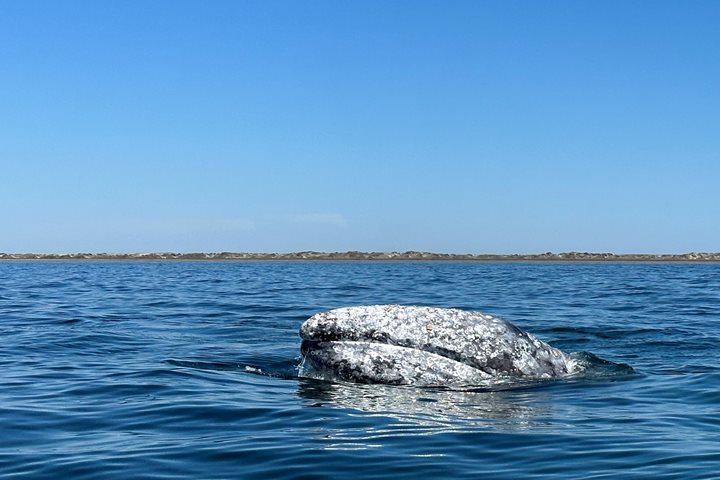A gentle night in the calm waters of Drake’s Bay provided us with the energy necessary to start our second day of expedition. National Geographic Quest repositioned to San Josecito Reserve. The reserve is located in a beautiful cove in the middle of a remote rainforest, right in the heart of Peninsula de Osa.
The sunshine invited us to breathe deeply and discover the magic of the reserve, one of nature’s jewels. Anxious to explore the coastal scenery, guests came ashore prepared to walk to Río Claro or to the private reserve.
A group of photographers walked south to learn tips for capturing memories of the trip. Other guests joined me for a more relaxing exploration. A sense of discovery was generated as we learned about the geology and solitude of the area. We observed the sedimentary and volcanic formations that decorate the landscape of this pristine region. We observed a flock of around ten scarlet macaws, a buff-throated saltator, golden-hooded tanagers, cherry-throated tanagers, tropical kingbirds, a common black hawk, yellow-headed caracaras and more.
The most adventurous explorers headed toward the river, getting in a workout as they hiked up and down. They discovered new views as each of nature’s windows opened, and exciting sites greeted them around every corner.
Happy souls returned to the ship to enjoy a delicious barbeque lunch prepared by the galley and served on the sundeck. Guests enjoyed the food, the company and the ocean breezes.
The afternoon was just as amazing as the morning. National Geographic considers Corcovado National Park to be, “the most biologically intense place on Earth.” We gathered at San Pedrillo Ranger Station. The Pargo Trail provided photographers and nature lovers with opportunities to enjoy the rainforest’s magic. We even spotted some white-nosed coatis!
One group decided to go for a swim under the beautiful waterfalls of San Pedrillo. Jesus Christ lizards, green kingfishers, spotted sandpipers and a troop of spider monkeys bid us farewell as we left this tropical paradise. At night, I gave a lecture to help guests understand the geological evolution of Costa Rica and its biodiversity. It certainly was a wonderful day!

